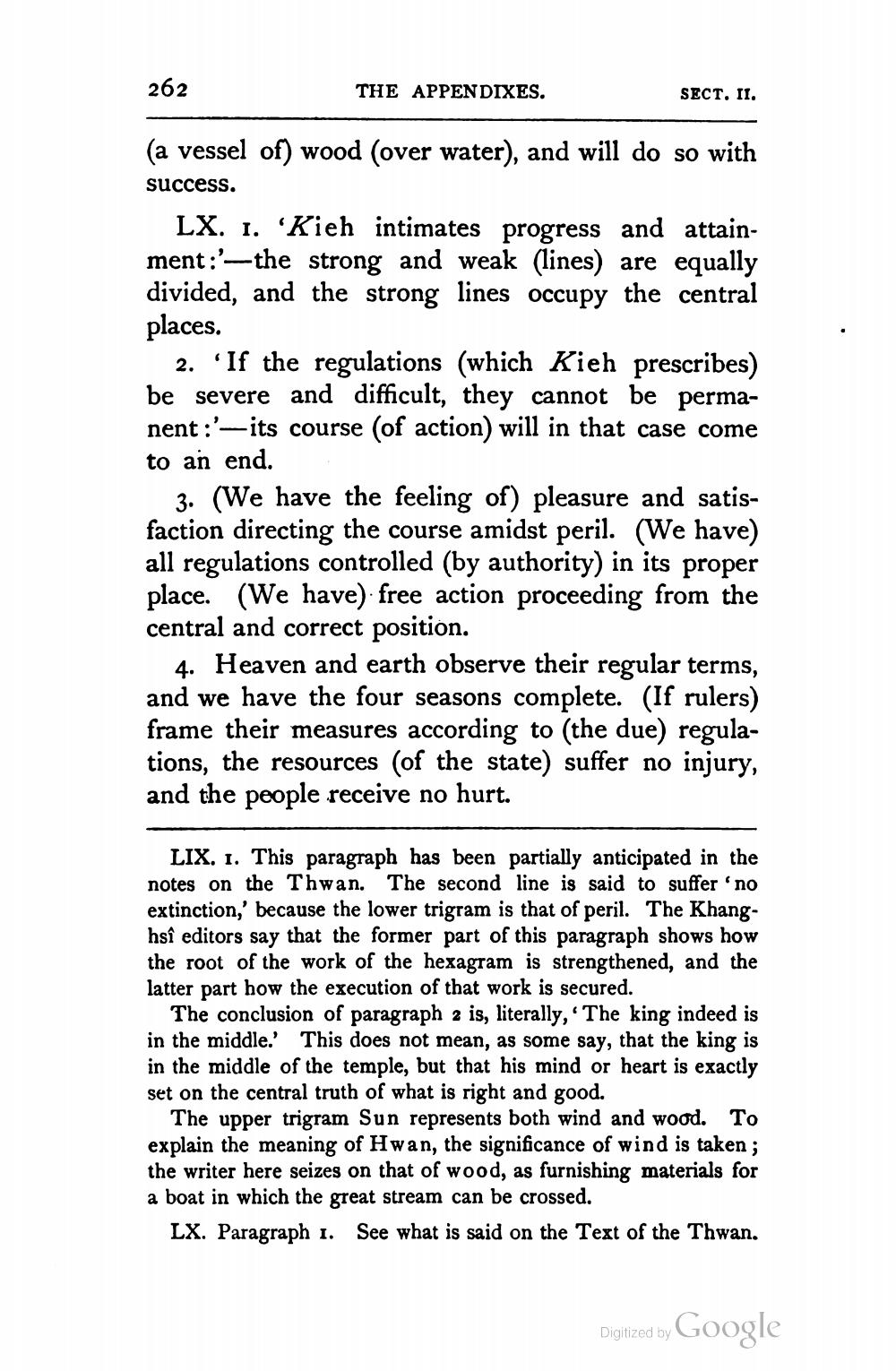________________
262
THE APPENDIXES.
SECT. II.
(a vessel of) wood (over water), and will do so with success.
LX. 1. 'Kieh intimates progress and attainment:'--the strong and weak (lines) are equally divided, and the strong lines occupy the central places.
2. 'If the regulations (which Kieh prescribes) be severe and difficult, they cannot be permanent:'-its course (of action) will in that case come to an end.
3. (We have the feeling of) pleasure and satisfaction directing the course amidst peril. (
We have) all regulations controlled (by authority) in its proper place. (We have) free action proceeding from the central and correct position.
4. Heaven and earth observe their regular terms, and we have the four seasons complete. (If rulers) frame their measures according to the due) regulations, the resources (of the state) suffer no injury, and the people receive no hurt.
LIX. 1. This paragraph has been partially anticipated in the notes on the Thwan. The second line is said to suffer 'no extinction,' because the lower trigram is that of peril. The Khang hsî editors say that the former part of this paragraph shows how the root of the work of the hexagram is strengthened, and the latter part how the execution of that work is secured.
The conclusion of paragraph 2 is, literally, 'The king indeed is in the middle. This does not mean, as some say, that the king is in the middle of the temple, but that his mind or heart is exactly set on the central truth of what is right and good.
The upper trigram Sun represents both wind and wood. To explain the meaning of Hwan, the significance of wind is taken; the writer here seizes on that of wood, as furnishing materials for a boat in which the great stream can be crossed.
LX. Paragraph 1. See what is said on the Text of the Thwan.
Digitized by Google




